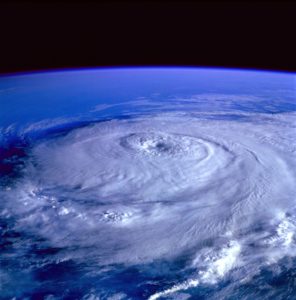
Hurricane Dorian had a significant impact on the southeastern United States. It caused flooding and other damage in North Carolina and Virginia. Hurricane season lasts from June through November, and storms are named in alphabetical order. This year has seen a surprisingly quiet season. We are only on the letter “D” in September.
Major Storm
Hurricane Barry hit Louisiana in July. It was a Category 1 storm with winds that reached 75 mph. The state experienced flooding and storm surges, yet that was the lowest-rated storm. Unfortunately, Hurricane Dorian may be the country’s first major storm, estimated at Category 4, this year. It could have winds between 130 and 156 mph before slowing down once it makes landfall.
The Saffir-Simpson Hurricane Wind Scale states the following for the current forecast:
“Catastrophic damage will occur: Well-built framed homes can sustain severe damage with loss of most of the roof structure and/or some exterior walls. Most trees will be snapped or uprooted and power poles downed. Fallen trees and power poles will isolate residential areas. Power outages will last weeks to possibly months. Most of the area will be uninhabitable for weeks or months.”
State of Emergency
As unpredictable as meteorology can be, the current administration proactively declared a state of emergency for Florida and about a dozen counties in Georgia. Local news channels are providing constant updates and not much else. Homeowners’ associations and city halls are sending out notices to prepare in advance. Schools and organizations have canceled weekend activities. Concerts and festivals have also been canceled or rescheduled for a later date to ensure safety.
There are over 20 million people in the state of Florida alone. The evacuation in 2017 left many stranded on major highways due to traffic jams that lasted for hours. Many gas stations ran out of fuel causing some to close temporarily. The storms tore through the entire state from the southeast to the panhandle, before continuing north.
Prepare for the Worst
Grocery stores are selling out of bottled water, and gas stations have long lines. Many consumers are filling prescriptions and refueling now in case there is a mandatory evacuation later. Residents are using sandbags and hurricane shutters to protect against the high winds and flash flooding predicted for the upcoming week. If you own stock in Home Depot, Lowes, any grocery chains, or any petroleum or oil companies, you might see a spike in value over the next few days.
One item that some might forget to replenish is cash. Since we’re in a digital society, many people no longer carry cash. However, if the power goes out, any stores that happen to open probably won’t accept any cards or digital wallets. Additionally, the most accessible ATMs may run out quickly, so visiting a brick and mortar bank may be the most reliable option.
If you live on the east coast or the Gulf of Mexico, it may be a good idea to have important documents, cash, water, and non-perishable food on hand, just in case.
Check your local news for updates on any safety risks in your area. You may even want to look into a hurricane attorney too. That way, you know you’re protected.
If you want to save more efficiently, Sign up for Digit today. This app can help you automate your money goals.
Read More
Hurricane Costs: Florence to Cost Hundreds of Billions
How to Prepare for Summer Rainstorms and Hurricanes
3 Ways on How Climate Change Can Impact Your Finances

Flanice Lewis is a DC-based financial literacy advocate, blogger, traveler and breast cancer survivor. In addition to having bought her first house at 23, she is a graduate of Howard University and The University of Virginia. You can follow her on Instagram or read her work here on critical financial.
Comments